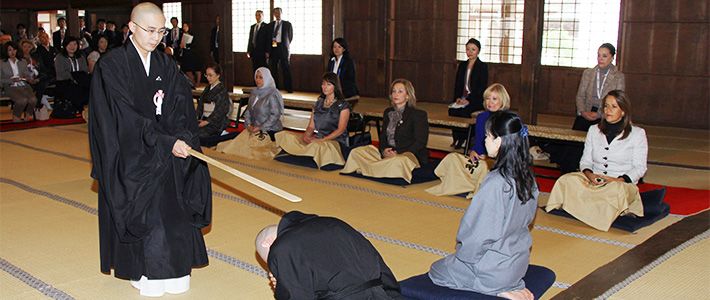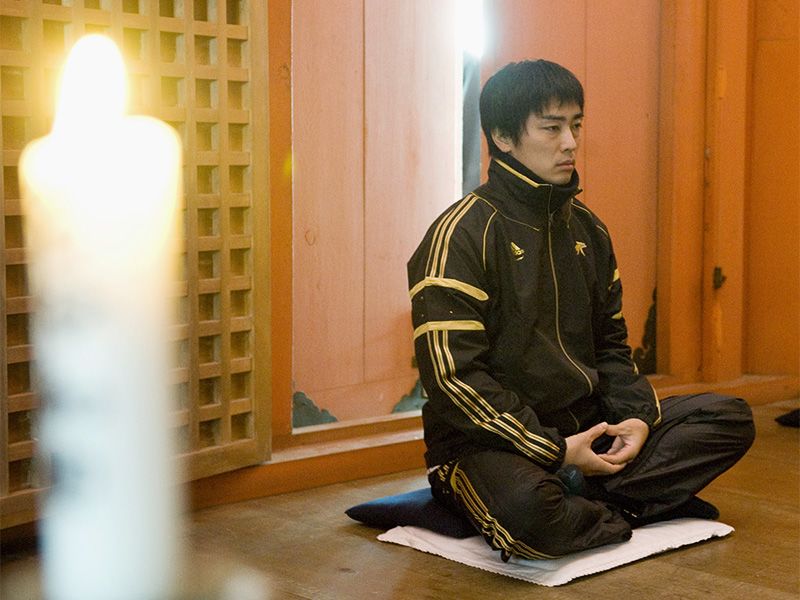
“Zazen” (Seated Meditation) Workshops
Society Culture- English
- 日本語
- 简体字
- 繁體字
- Français
- Español
- العربية
- Русский
A State of Selflessness
Zazen, a form of seated meditation, is a kind of Zen Buddhism training in which practitioners seek to enter a state of selflessness by shutting out worldly desires. This may lead toward enlightenment, but zazen is seen primarily as to be practiced for its own sake.
In Japan today, many temples offer zazen workshops to the general public that focus on mental training rather than the religious aspects of the practice. Even in big cities, there are large numbers of these workshops led by priests, which are either free or cost a small fee. Often there is no fixed price and participants decide themselves how much to pay (or whether to pay at all).
Body, Breath, and Mind
Typically in these workshops, those taking part will sit cross-legged on cushions (although other sitting styles are acceptable for those who find this difficult) with their hands folded on top of their legs. They then straighten their backs, half-close their eyes, and, with their mouths shut, take deep breaths driven by the stomach muscles.
Having established a breathing pattern through the nose, they concentrate only on counting their breaths. Successful practitioners should then reach a stage where they no longer need to count and are meditating without any specific object.
In this way, body, breath, and mind are successively harmonized, and it becomes possible to see the world as it is, without being distracted by everyday preoccupations. Traditionally, each session lasts the length of time it takes for a stick of incense to burn—around 30 to 40 minutes.
 Chicago Cubs pitcher Wada Tsuyoshi practicing zazen at the temple Enryakuji, near Kyoto. (© Jiji)
Chicago Cubs pitcher Wada Tsuyoshi practicing zazen at the temple Enryakuji, near Kyoto. (© Jiji)
Maintaining Focus
One of the more curious aspects of zazen is the way that priests occasionally hit practitioners with a flat wooden stick known as a keisaku. When meditators lose concentration, slip into incorrect posture, or even start to nod off, they may receive a light whack on the back of the shoulder. The sudden sound ringing out through the quiet leaves a strong impression and is a common image of zazen for many in Japan. However, the aim is to assist concentration, not to punish, and the blow is carefully gauged not to hurt the recipient. In any case, though, the stick is not generally used in a beginners’ workshop.
English information on temples offering zazen workshops:
Zazenkai list (temples throughout Japan): http://teishoin.net/zazen/san2.html
Tōkeiji (Kamakura): http://www.tokeiji.com/english/lessons/
Shunkōin (Kyoto): http://shunkoinzentemple.blogspot.jp/
Kenninji (Kyoto): http://www.kenninji.jp/english/
(Banner photo: Wives of international leaders visiting Japan for the Asia-Pacific Economic Cooperation summit take part in a zazen workshop at Kenchōji, a temple in Kamakura. © Jiji.)